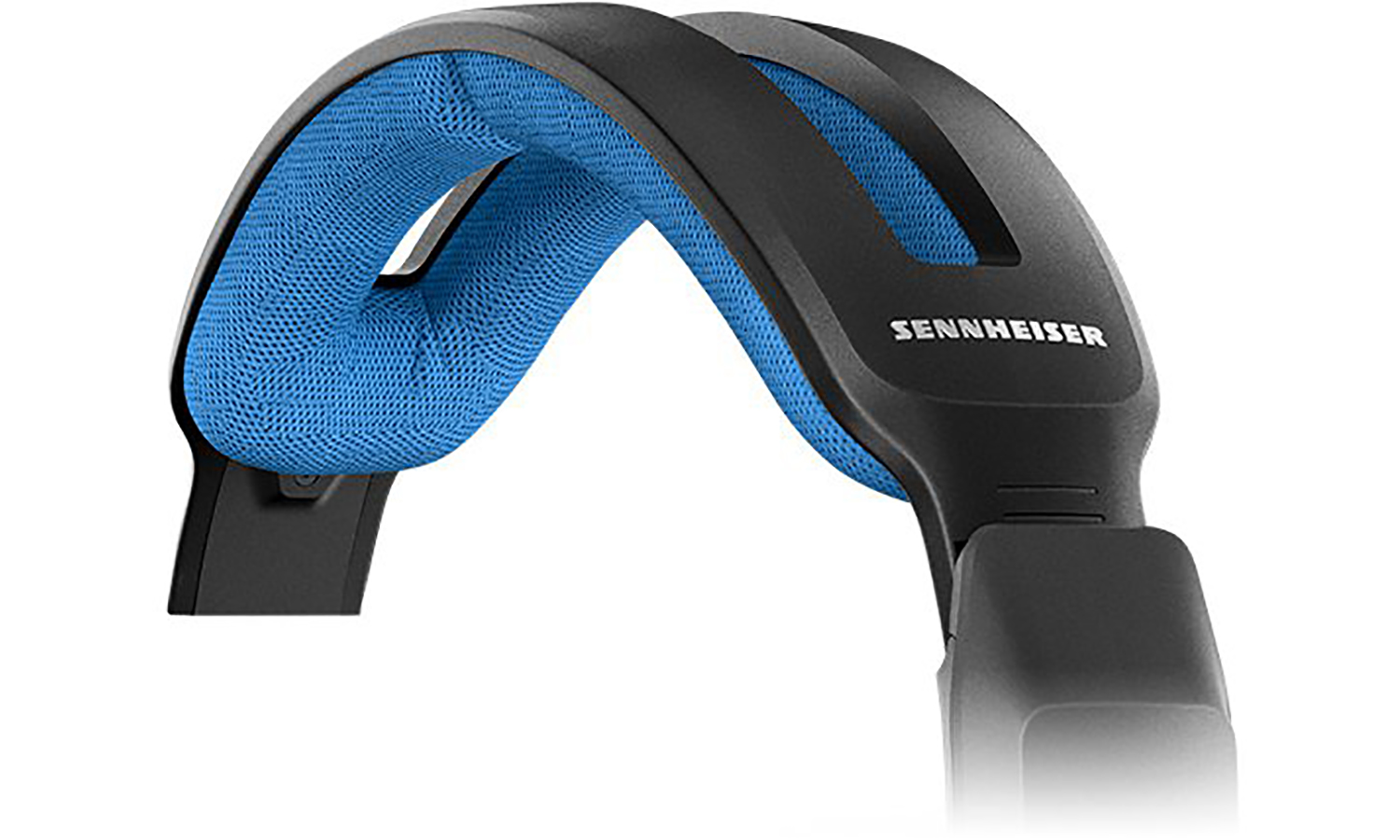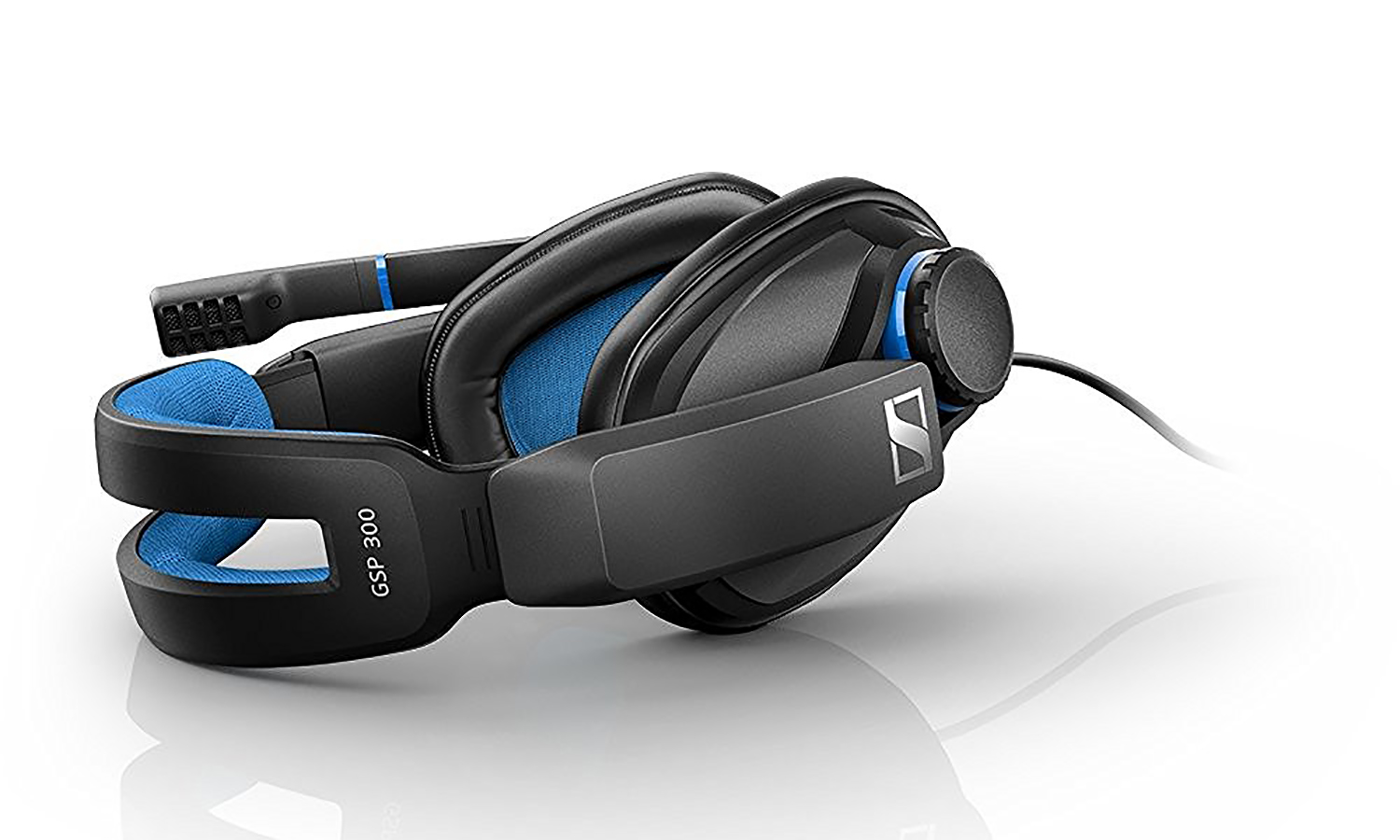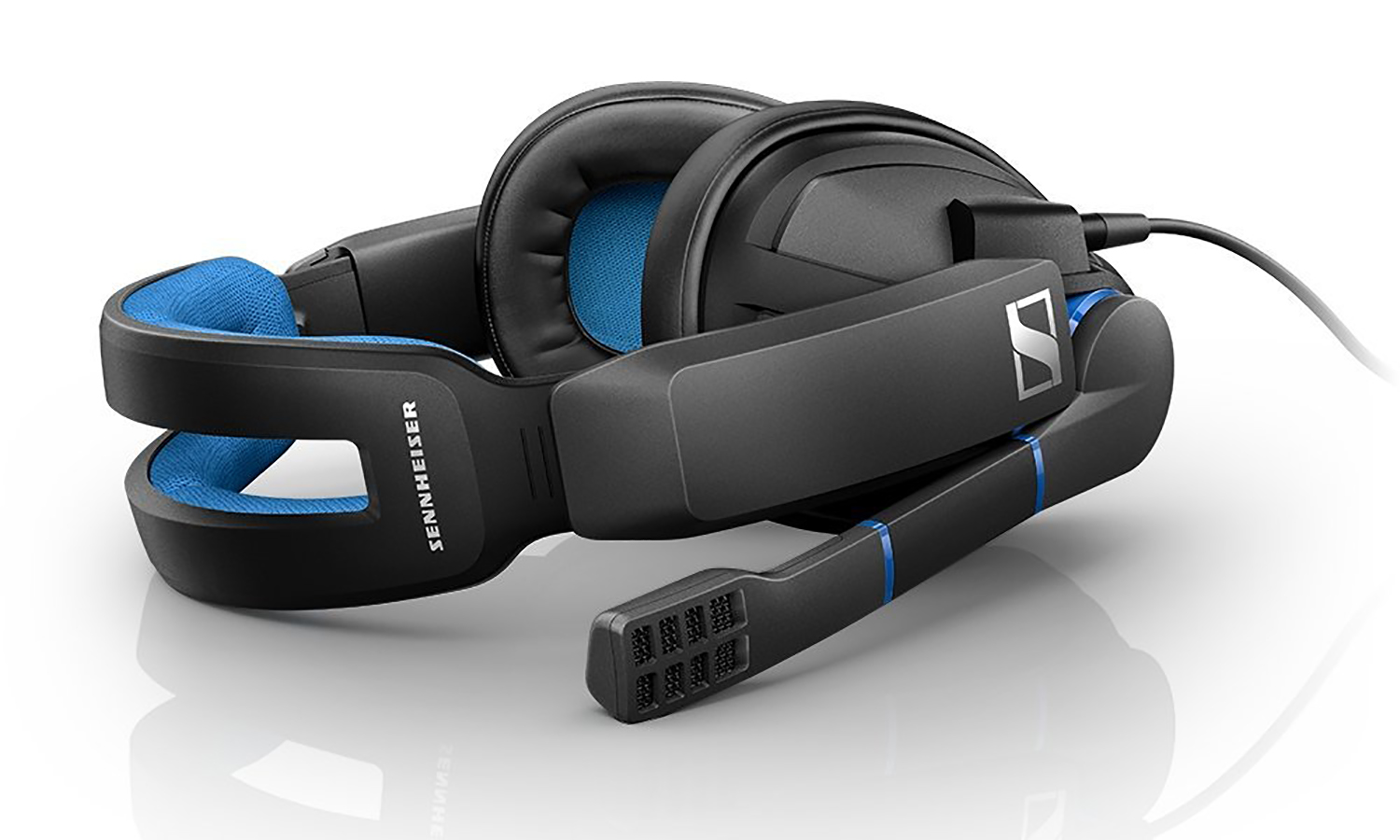Tom's Guide Verdict
The Sennheiser GSP 300 delivers high-quality audio with a simple setup, a comfortable design and a pretty good microphone.
Pros
- +
Comfortable
- +
Simple setup
- +
Competent across multiple genres
Cons
- -
Expensive for what it does
- -
So-so microphone
- -
Music performance could be better
Why you can trust Tom's Guide
I've often wondered why Sennheiser, easily my favorite headphone manufacturer, never made a bigger push into gaming headsets. On paper, it sounds like a perfect combination: the crisp audio and subdued design of a Sennheiser peripheral, combined with the handy mic and volume controls of a gaming device. Fortunately for fans of the high-end headphone maker, Sennheiser just released a whole line of gaming headsets, with the $100 GSP 300 serving as the entry-level model.
The device delivers high-quality audio, as expected, with a simple setup and a pretty good microphone. However, it's a bit bulkier than I would have expected, and costs a lot of money for what it does. It's a worthy option on its own, though both Sennheiser and its competitors sell better products than this.
Design
Full disclosure: My everyday pair of headphones is a Sennheiser HD 25-1 II, which I bought a few years ago with some birthday money. It was my first set of headphones that cost more than $100, and I've dragged them with me across a dozen states, six countries, two continents and three ugly breakups. I'm even using them as I write this review. Among other things, I adore Sennheiser's minimalist, distinctive design, which wastes no space and makes a statement about substance over style.
"Plain" is not an adjective I ever thought I'd associate with Sennheiser, and yet here we are.
That's why I was so shocked to open up the GSP 300 and discover that it was so bland. While not unattractive by any standards, if you looked up "gaming headset" in some futuristic dictionary, you'd probably find a picture of the GSP 300. It's a large black peripheral with over-the-ear cups, plush blue padding on the headband, a rigid mic on a movable arm, and not one distinguishing feature.
MORE: Best Gaming Headsets
"Plain" is not an adjective I ever thought I'd associate with Sennheiser, and yet here we are.
Still, "plain" hardly equates to "bad." The GSP 300 would look out-of-place on an airplane or a bus, but its laid-back, sensible design is just fine for your gaming setup. There's a volume control knob behind the right ear cup and two 3.5 mm jacks: one for audio, one for the mic.
Get instant access to breaking news, the hottest reviews, great deals and helpful tips.
You can also attach them both into an adapter for a single connection, in case you want to use the headset with a game console or mobile device.
Comfort
If nothing else, the GSP 300 is easy to wear. The ear cups are a plush, faux leather that nonetheless feel cool and breathable.

Between those ear cups and the padding on the headband, the 10.2-ounce peripheral sits lightly on the head, but makes a snug seal around the ears without pressing down too hard. I wore the GSP 300 for hours on end while working, gaming and watching videos, and I didn't encounter any discomfort.

I handed the headset off to a co-worker who shared my thoughts on the GSP 300. He said they were comfortable and easy to wear over a long period, and had no complaints about the way they felt.
Gaming Performance
I expect top-tier sound from Sennheiser headphones, and when it comes to gaming, I was not disappointed. The GSP 300 produced rich, clear sound across a variety of genres, whether I was playing Overwatch, StarCraft II: Nova Covert Ops, The Witcher 3: Wild Hunt or Marvel Heroes.

The in-game audio on the GSP 300 suffers a bit from not being tunable. For example, there's no way to make a highly cinematic game like The Witcher 3 prioritize different sounds than a competitive shooter like Overwatch.
That aside, though, the audio was strong across all genres. In Overwatch, I heard my teammates plead for healing as I swooped around the Battlefield as Mercy. The sweeping orchestral score and plentiful voicework came through loud and clear in The Witcher 3. StarCraft II and Marvel Heroes also struck an admirable balance among voices, music and sound effects.
The GSP 300 may not give hard-core competitive players the amount of fine-tuning they need, but otherwise, it suits just about any gaming genre. Being able to wear it for long periods of time without discomfort is a plus, too.
Music Performance
Sennheiser's regular headphones produce some of the best sound on the market, and I was hoping that quality would carry over to its gaming line. It has — somewhat. While the audio on the GSP 300 lacks the immediacy and crystal clarity on a standard Sennheiser, there's still some depth to the sound.

I used the GSP 300 for a few days at work, listening to everything from Flogging Molly and Old Crow Medicine Show to the Rolling Stones and Bach's "Brandenburg Concertos." At the risk of damning the headset with faint praise, the GSP 300 sounded better than I would expect from a gaming headset. There was a clear distinction between treble and bass frequencies, and every instrument and voice came through, even on complex songs.
On the other hand, music tended to sound a little staid. I had the sense that I was listening to music on a decent pair of headphones, rather than living through a live concert, as traditional Sennheisers tend to make listeners feel. Perhaps I've been spoiled, but I expect the absolute best from this company; to hear music that's just "good" felt underwhelming.
Cables and Microphone
The GSP 300 has no USB connection and no software to deal with. As such, it doesn't have much in the way of special features. By default, the headset connects via two 3.5 mm wires: one for audio, and one for the mic. Using an included adapter, you can plug both into a single 3.5 mm jack for mobile or game-console compatibility. The adapter is a good one, and both audio and mic quality carry over perfectly.

The mic itself is also decent. Using Microsoft Voice Recorder, I tested my voice with a variety of mic positions. The peripheral didn't carry much background noise, and my voice was clear enough for chat purposes, picking up only a little distortion along the way. However, the mic is extremely quiet unless it's right next to your mouth, so players will have to project a bit.
Bottom Line
I can recommend the GSP 300, though with more reservations than I'd normally have for a Sennheiser peripheral. The device is comfortable and sounds good, but not as good as the company's pedigree would suggest. For a $100 headset, the GSP 300's lack of tunability is similarly disappointing.
Still, taken for what it is, the GSP 300 is a perfectly viable choice for just about any game genre, with enough versatility to function as everyday music headphones, too. I wouldn't suggest it wholeheartedly over the SteelSeries Arctis ($100), which offers a more precise fit and software for more versatile tuning, but the two are at least worth comparing.

Marshall Honorof was a senior editor for Tom's Guide, overseeing the site's coverage of gaming hardware and software. He comes from a science writing background, having studied paleomammalogy, biological anthropology, and the history of science and technology. After hours, you can find him practicing taekwondo or doing deep dives on classic sci-fi.

